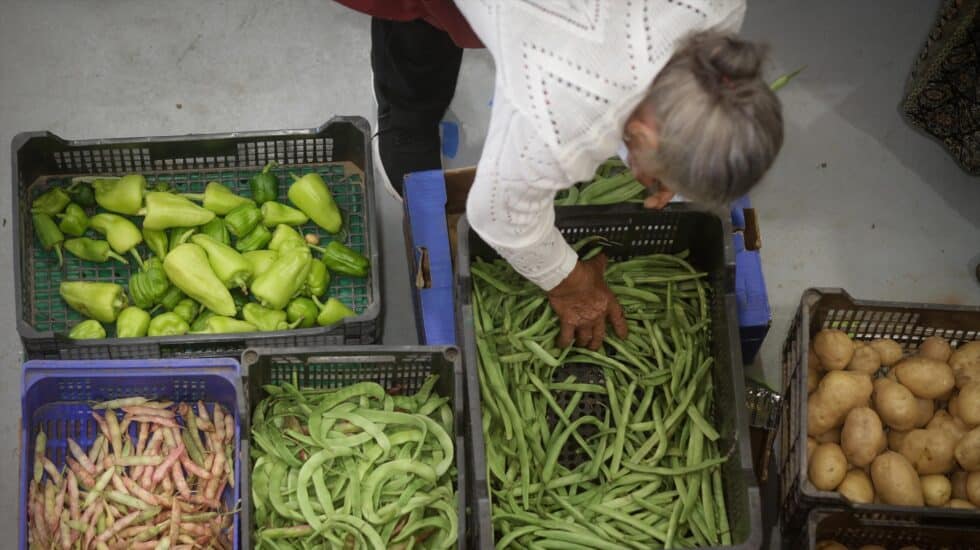

A man buys food at a market in Lugo, Galicia.
After several months of respite, inflation is tightening again. October CPI data released on Tuesday showed the same 3.5% as in September, after falling to 1.9% in June and remaining below 3% in July and August. With this autumn recovery, prices will rise again to the same levels as in April, and the forecast is to end the year with even higher inflation, especially due to the decline in energy prices that occurred a year ago and which is now causing the so-called base effect , since inflation is usually expressed on an annualized basis.
Compared to the previous month, the figure in October increased by three tenths. But the biggest headache for Spanish families is food prices. They pared their gains this month and were up less than 10% for the first time in more than a year and a half – since March 2022 – even though overall CPI data has fallen since then. significantly – then it was 9.8% -. However, the recorded increase of 9.5% makes Spain for the first time the country with the highest food inflation in the entire eurozone.
Until now, Eurostat data showed that Spain had the highest food inflation among major EU countries and the third highest among eurozone countries, behind only Belgium (11%) and Slovakia (10.9%). But October data from both countries remained below the CPI for food in SpainThe same thing happened with the rest of the countries that were at the top of this table, such as Slovenia and France. Belgium, which has so far topped the list, recorded food inflation at 9.1%, and Slovakia at 8.9%; France - 7.9%, Slovenia - 7.3%. In the absence of some data, such as data from Portugal or Ireland, average food inflation in the eurozone was 7.5% in October, two points lower than in Spain.
Why don't food prices fall?
The significant increase in food prices since last year is due to a combination of factors - from rising energy prices to rising prices for fertilizers and fuels, as well as the specific conditions associated with the production of some of them. For example, falling prices in sugar-producing countries have sent sugar prices up more than 40% this summer, and drought has pushed oil prices up more than 74%, according to the October Consumer Price Index (CPI). on an annualized basis. .
It can be anticipated that food prices will not fall in the coming months, both due to the aforementioned base effect and the predictable end of government aid. Let us recall that in December last year the executive branch approved a package of measures that included a general increase in VAT on basic food products, as well as a reduction from 10% to 5% on pasta and oils, which will inevitably lead to higher prices. this discount is void.
Oil, rice and potatoes, which are the most expensive
Following olive oil, which for several months was the most expensive product in annual terms in the entire consumer basket, the most expensive products in October were rice, potatoes, jams and juices (+16%). ), breakfast cereals (+15%), pork and sauces (+14%), and cocoa and chocolate (+13%). Beans continue to rise in price (+13%), as well as milk and soft drinks (+12%) and tea (+11%).
On the opposite side of the table, non-olive oils, down 30%, are the only product on the list that is getting cheaper instead of getting more expensive. Electricity also fell in price this month (22%), hydrocarbons such as butane (26%), natural and city gas (19%) and liquid fuels (14%). On the other hand, in month-to-month terms, the data shows better news as, in addition to energy, potatoes are 2% cheaper than in September, as well as fresh, frozen seafood, dried, smoked or salted fish and other products. that the price will drop very slightly.
Forecasts point to rising inflation next year
Economists predict prices will continue to rise at the same or higher levels in the coming months, and that they will rise even further next year. A growing number of institutions believe that the average CPI in 2024 will exceed the 2023 figure due to the reversal of government measures, as well as rising energy prices. Thus, the Bank of Spain believes that the average consumer price index in 2024 will be 4.3%, compared to the 3.6% it estimates this year, while AIReF forecasts inflation at 4% next year and 3.9%. in that. Similarly, the IMF forecasts 3.9% and 3.5% next year and this year respectively. The government does not publish inflation forecasts.
Source: El Independiente